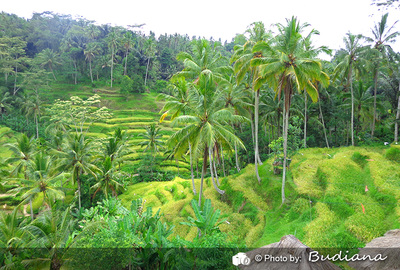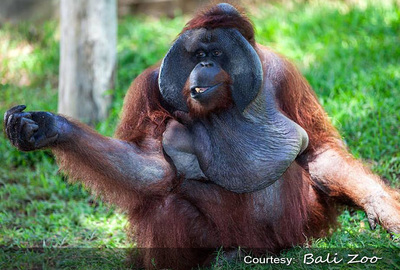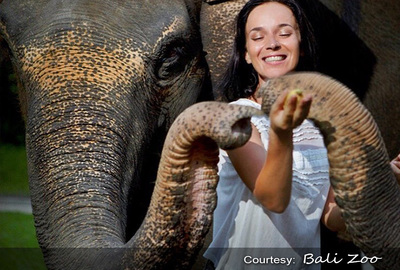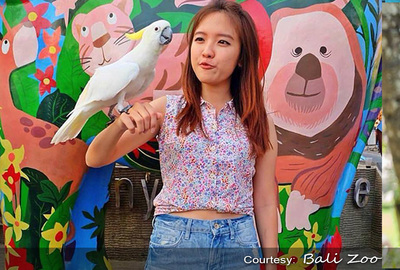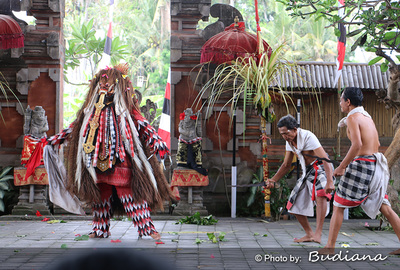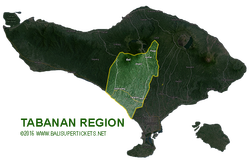Bali Safari and Maring Park: Animal education center and conservation. Related tour program to Bali Zoo Park, click here
Bali Zoo Park: Animal education center and conservation.
Related tour program to Bali Zoo Park, click here
Batubulan: At least there are four stages setup for regular Barong and keris dance within this stone carving village. There are hundreds or maybe even thousands of stone carving are offered in the workshops along the village to the local or foreign consumers. The price of the stone carving maybe not the biggest consideration for foreign consumers but the shipment cost will.
Related tour program to Click here
Celuk: gianyar town: Rows of huge white statues beautified this regency jdlisiblueital of Ginyar. A visit to one or two of the single ikat Batik factories will give opportunity to visitors to observe more of the making process of the most wore Balinese clothes.kapal. Do you want to get Great Tour Deals to visit this talent Gold and Silver smiths village ? Click here
Goa Gajah: Literally means ‘Elephant Cave”. Although named by ‘elephant' it doesn't mean there is any real elephant live or ever live here. The name Goa Gajah derived from ‘Lwa Gajah' which is mentioned in the manuscripts found in this site. This temple complex was built for the first time around 11 century based on epigraph found in this site.A seven meters deep cave with a shape of T-letter is the major attraction of this Bedulu village's local temple. The cave it self is carved in a solid stone hill of the river valley. The main figure of the carving at the cave entrance is ‘boma', a barong face, accompanied with big clapping fingers on its side. Leaf, flower and some horror figures can be noticed if you give more attention look to the rest of the carving. Some holes that are considered to be used as meditation or sleeping quarters can be found in the wall of the cave. Nowdays, those holes are used to placed offerings whenever there is ceremonies taking place.On the left end side of the cave is Ganesha statue, believe it as ‘the God of knowledge'. Meanwhile on the right end side can be found three ‘linggas', that each of them dedicated to the three common God manifestations in Bali, Brahma, Wisnu and Siwa. There are other three stone carving in the center wall, one of them figuring head and face.Three other statues of Ganesha, demons and Men Brayut, a legendary lady with her beloved children, are placed on a high building located on the left side of cave entrance. It is considered that these statues are 1000 years old. In the middle of the complex, in front of the cave, there is bathing place that is not any longer used by the local people. The angle figures within the bathing complex are about similar to common figures found in India.On the south part of the complex, there are along flight of step leads down the lower part of the valley. After crossing a bridge above a small creek and follow another flight of steps up to eastern side of the valley, a headless sitting Budha statue can be seen. Another evident of a close relationship between the two religions. Do you want to get Great Tour Deals to visit this ancient temple? Click here
Gunung Kawi Tampaksiring: An archaeological complex lies on gorge of Pakerisan River. To reach the complex visitors must walk about 600 meters from the parking lot to the ticket counter than walked down on 315 stone steps. Before take a cross on the bridge at the bottom of the valley make a turn to the left to see the first stone monument. Another group of stone monument is located on the left side of the main temple across of the river.The monuments are hewn in relief on a solid rock hill commonly call candi. There are shaped like burial towers found all over Central and East Java. However, there are many theories telling identity of the royal personages honored here. One very credible theory suggests the five 'candi' in the main group were built for King Udayana, his Javanese queen Gunapriya, his concubine, his illustrious eldest son Airlangga who ruled over East Java, and his youngest son Anak Wungsu. Reigning over Bali from AD 1050 to 1077, Anak Wungsu is believed to have given up his kingdom to become a religious hermit.In the right of the main ensemble of temples is a cloister with five cells carved out of rock. The cloister inmates most likely were caretakers of the 'candi'. There's a second hermitage near the main cloister, consisting of niches around a central courtyard, which might have served as sleeping quarters for visiting pilgrims. To get into this part of the temple visitors must take of their shoes.Should you have a spare time, a walk up north of the temple complex could be a short nice walking along the rice field and river stream. The path leads to a small waterfall after 800 meters away and about 1,5 kilometers to Mengening Temple. Do you want to get Great Tour Deals to visit this holly spring temple? Click here
Mas: The footfall field and the big banyan tree within the village notes the center of Mas village. However, since it become a known tourist stop for fine wood carving, galleries and workshop building are stretched starting from intersection of Sakah, where a huge baby statue stand in the middle, until another intersection up north at Teges Village. Small lanes on the left or right side of the main road are the houses of the woodcarvers and mask makers. Visitors can enter any houses with sign at front gates to see the artist at work and get a better price than the galleries on the main road. Since the 1930s the subject use for carving slightly change become more realistic and contemporary such as people with their daily activities, animals, Buddha's and many other abstract figures. Formerly, carvings were made only for religious purposes and featured exclusively traditional characters from the Mahabarata and Ramayana.Comparing to other carving village, wood carving in Mas village are made from high quality wood including sandal and crocodile wood. It usually unpainted, and smoothly carved. Do you want to get Great Tour Deals to visit Mas village? Click here
Sukawati: It is known for its art market that become 'a must see' place by tourists especially the local ones from Jakarta or other area in Java. Huge number of small stalls occupied the two stories building offer a lot of cheap souvenirs.Almost any kind of Bali's souvenirs can be found in here either painting, woodcarving, clothes, temple umbrellas and other temple accessories, leather puppet, wind chime, jewelries and others. It is better for you to prepare a list of souvenirs that you want to bring back home since you may be stuck in a confusion situation of too overwhelmed by the huge quantity of souvenirs and finally bring home nothing.200 meters toward west from the Sukawati Art Market, on the right side of the road, there is another market called 'Pasar Seni Pagi' of 'The morning Art Market' which only open very early in the morning until around 7 AM. The crowd of souvenirs retailers from other part of Bali will come here to get semi -finished product with a very low price.Many of Bali's most established puppeteers live in Sukawati. In line with this fact, Sukawati is also the center of Shadow puppets production center. The leather puppet, 'wayang kulit' are made either of cow or buffalo hide.
Tegalalang: An endless handicraft stalls located about 20 kilometers along the main road of this district. The craftsmen are too creative as they can make almost any thing that tourist have in mind with various art materials.Do you want to get Great Tour Deals to visit the magnificent rice terrace? Click here
Ubud's Monkey Forest: Inhibited by up to 125 monkeys divided into 3 major groups. Comparing other sanctuaries in Bali, the mammals in here are tame. There are three local temples settle within the sacred sanctuary. Do you want to getGreat Tour Deals to visit this friendly monkeys? Click here
The Pejeng Area: The finding of many archeological sites within and beyond this area become one of the reason for the local government to built an archeological museum on the southern part of the village. Two most visited sites by tourist are Pura Penataran Sasih, the temple of a moon faced bronze drum, and Pura Kebo Edan, the temple of three meters high ancient stone statue.
Tirta Empul: This beautiful water spring temple was built around 10th century under the rule of Sri Candra Singha Warmadewa. The spring that piped to three fountains complexes is believed to have been created by the god Indra, who descend to the earth to brought back the life of his army, which was poisoned by the demon-king Mayadanawa. The water source is located at a pool on a higher level where water bubbling up and plants growing on the bottom as well as fish and large ill can clearly be seen.According to believe of the people, each fountains complex has their special religious functions. The complex located on most right sides is for spiritual purification; the one in the middle to cleanse from evil, meanwhile the left side one is an antidote to poison. Do you want to get Great Tour Deals to visit the holly spring temple? Click here
Ubud: Attributed by its natural and cultural atmosphere, Ubud has attracted many foreigners to visit or even live in this artisan's village since 1930's. Many expatriate especially foreign or local artists fall in love and decide to settle in this international village. The achievement of Ubud as a tourist destination cannot be separated from the effort of those artists who display Ubud to the world through their work.Its location in the central of Bali makes Ubud become a good base for visitors to visit other places all over Bali. Nusa Dua, Kintamani, Lovina, Amed or Jembrana can be reach by just doing a day tour without so much tiring of driving. Many beautiful landsjdlisibluees, interesting historical sites and not to mentioned art villages can easily reach even by walking. Ayung river that stretch on the west part of Ubud offer a fascinating view of river gorge are the spot of several most luxurious hotels on the island. Attracted by the beauty of river valley at least five rafting companies run their trip on this part of the Bali's longest river. Other river hill that used as hotel nest are Campuhan river in the middle and Petanu on the eastern part. Most tourist accommodations are located in the center of Ubud. The center would be noted by former Ubud palace that is located across the art and traditional market of Ubud. The accommodations available suit to any budget and most of them will offer you a stay at charming cottages or a stay within a family house.Instead of visiting it on the daily sightseeing tour, the best way to get the real atmosphere of Ubud is by spending couple of night within the area. Besides regularly dancing performance or permanent art exhibition on many fine art galleries, there are dozen of things can be explored. People preparing ceremonies, temple festivals, colorful celebration, dance and traditional 'gamelan' rehearsals, occasional cremation are rarely unseen. It is not a surprising anymore if you see foreigners in their complete Balinese dress involve in these local activities. There are some courses of Balinese dance and music, cooking classes, wood carving, mask making, batik painting or even learn the skill to be puppet masters are available for those who eager to have some of the local skills. Do you want to get Great Tour Deals to visit Ubud the town of arts? Click here
Bali Zoo Park: Animal education center and conservation.
Related tour program to Bali Zoo Park, click here
Batubulan: At least there are four stages setup for regular Barong and keris dance within this stone carving village. There are hundreds or maybe even thousands of stone carving are offered in the workshops along the village to the local or foreign consumers. The price of the stone carving maybe not the biggest consideration for foreign consumers but the shipment cost will.
Related tour program to Click here
Celuk: gianyar town: Rows of huge white statues beautified this regency jdlisiblueital of Ginyar. A visit to one or two of the single ikat Batik factories will give opportunity to visitors to observe more of the making process of the most wore Balinese clothes.kapal. Do you want to get Great Tour Deals to visit this talent Gold and Silver smiths village ? Click here
Goa Gajah: Literally means ‘Elephant Cave”. Although named by ‘elephant' it doesn't mean there is any real elephant live or ever live here. The name Goa Gajah derived from ‘Lwa Gajah' which is mentioned in the manuscripts found in this site. This temple complex was built for the first time around 11 century based on epigraph found in this site.A seven meters deep cave with a shape of T-letter is the major attraction of this Bedulu village's local temple. The cave it self is carved in a solid stone hill of the river valley. The main figure of the carving at the cave entrance is ‘boma', a barong face, accompanied with big clapping fingers on its side. Leaf, flower and some horror figures can be noticed if you give more attention look to the rest of the carving. Some holes that are considered to be used as meditation or sleeping quarters can be found in the wall of the cave. Nowdays, those holes are used to placed offerings whenever there is ceremonies taking place.On the left end side of the cave is Ganesha statue, believe it as ‘the God of knowledge'. Meanwhile on the right end side can be found three ‘linggas', that each of them dedicated to the three common God manifestations in Bali, Brahma, Wisnu and Siwa. There are other three stone carving in the center wall, one of them figuring head and face.Three other statues of Ganesha, demons and Men Brayut, a legendary lady with her beloved children, are placed on a high building located on the left side of cave entrance. It is considered that these statues are 1000 years old. In the middle of the complex, in front of the cave, there is bathing place that is not any longer used by the local people. The angle figures within the bathing complex are about similar to common figures found in India.On the south part of the complex, there are along flight of step leads down the lower part of the valley. After crossing a bridge above a small creek and follow another flight of steps up to eastern side of the valley, a headless sitting Budha statue can be seen. Another evident of a close relationship between the two religions. Do you want to get Great Tour Deals to visit this ancient temple? Click here
Gunung Kawi Tampaksiring: An archaeological complex lies on gorge of Pakerisan River. To reach the complex visitors must walk about 600 meters from the parking lot to the ticket counter than walked down on 315 stone steps. Before take a cross on the bridge at the bottom of the valley make a turn to the left to see the first stone monument. Another group of stone monument is located on the left side of the main temple across of the river.The monuments are hewn in relief on a solid rock hill commonly call candi. There are shaped like burial towers found all over Central and East Java. However, there are many theories telling identity of the royal personages honored here. One very credible theory suggests the five 'candi' in the main group were built for King Udayana, his Javanese queen Gunapriya, his concubine, his illustrious eldest son Airlangga who ruled over East Java, and his youngest son Anak Wungsu. Reigning over Bali from AD 1050 to 1077, Anak Wungsu is believed to have given up his kingdom to become a religious hermit.In the right of the main ensemble of temples is a cloister with five cells carved out of rock. The cloister inmates most likely were caretakers of the 'candi'. There's a second hermitage near the main cloister, consisting of niches around a central courtyard, which might have served as sleeping quarters for visiting pilgrims. To get into this part of the temple visitors must take of their shoes.Should you have a spare time, a walk up north of the temple complex could be a short nice walking along the rice field and river stream. The path leads to a small waterfall after 800 meters away and about 1,5 kilometers to Mengening Temple. Do you want to get Great Tour Deals to visit this holly spring temple? Click here
Mas: The footfall field and the big banyan tree within the village notes the center of Mas village. However, since it become a known tourist stop for fine wood carving, galleries and workshop building are stretched starting from intersection of Sakah, where a huge baby statue stand in the middle, until another intersection up north at Teges Village. Small lanes on the left or right side of the main road are the houses of the woodcarvers and mask makers. Visitors can enter any houses with sign at front gates to see the artist at work and get a better price than the galleries on the main road. Since the 1930s the subject use for carving slightly change become more realistic and contemporary such as people with their daily activities, animals, Buddha's and many other abstract figures. Formerly, carvings were made only for religious purposes and featured exclusively traditional characters from the Mahabarata and Ramayana.Comparing to other carving village, wood carving in Mas village are made from high quality wood including sandal and crocodile wood. It usually unpainted, and smoothly carved. Do you want to get Great Tour Deals to visit Mas village? Click here
Sukawati: It is known for its art market that become 'a must see' place by tourists especially the local ones from Jakarta or other area in Java. Huge number of small stalls occupied the two stories building offer a lot of cheap souvenirs.Almost any kind of Bali's souvenirs can be found in here either painting, woodcarving, clothes, temple umbrellas and other temple accessories, leather puppet, wind chime, jewelries and others. It is better for you to prepare a list of souvenirs that you want to bring back home since you may be stuck in a confusion situation of too overwhelmed by the huge quantity of souvenirs and finally bring home nothing.200 meters toward west from the Sukawati Art Market, on the right side of the road, there is another market called 'Pasar Seni Pagi' of 'The morning Art Market' which only open very early in the morning until around 7 AM. The crowd of souvenirs retailers from other part of Bali will come here to get semi -finished product with a very low price.Many of Bali's most established puppeteers live in Sukawati. In line with this fact, Sukawati is also the center of Shadow puppets production center. The leather puppet, 'wayang kulit' are made either of cow or buffalo hide.
Tegalalang: An endless handicraft stalls located about 20 kilometers along the main road of this district. The craftsmen are too creative as they can make almost any thing that tourist have in mind with various art materials.Do you want to get Great Tour Deals to visit the magnificent rice terrace? Click here
Ubud's Monkey Forest: Inhibited by up to 125 monkeys divided into 3 major groups. Comparing other sanctuaries in Bali, the mammals in here are tame. There are three local temples settle within the sacred sanctuary. Do you want to getGreat Tour Deals to visit this friendly monkeys? Click here
The Pejeng Area: The finding of many archeological sites within and beyond this area become one of the reason for the local government to built an archeological museum on the southern part of the village. Two most visited sites by tourist are Pura Penataran Sasih, the temple of a moon faced bronze drum, and Pura Kebo Edan, the temple of three meters high ancient stone statue.
Tirta Empul: This beautiful water spring temple was built around 10th century under the rule of Sri Candra Singha Warmadewa. The spring that piped to three fountains complexes is believed to have been created by the god Indra, who descend to the earth to brought back the life of his army, which was poisoned by the demon-king Mayadanawa. The water source is located at a pool on a higher level where water bubbling up and plants growing on the bottom as well as fish and large ill can clearly be seen.According to believe of the people, each fountains complex has their special religious functions. The complex located on most right sides is for spiritual purification; the one in the middle to cleanse from evil, meanwhile the left side one is an antidote to poison. Do you want to get Great Tour Deals to visit the holly spring temple? Click here
Ubud: Attributed by its natural and cultural atmosphere, Ubud has attracted many foreigners to visit or even live in this artisan's village since 1930's. Many expatriate especially foreign or local artists fall in love and decide to settle in this international village. The achievement of Ubud as a tourist destination cannot be separated from the effort of those artists who display Ubud to the world through their work.Its location in the central of Bali makes Ubud become a good base for visitors to visit other places all over Bali. Nusa Dua, Kintamani, Lovina, Amed or Jembrana can be reach by just doing a day tour without so much tiring of driving. Many beautiful landsjdlisibluees, interesting historical sites and not to mentioned art villages can easily reach even by walking. Ayung river that stretch on the west part of Ubud offer a fascinating view of river gorge are the spot of several most luxurious hotels on the island. Attracted by the beauty of river valley at least five rafting companies run their trip on this part of the Bali's longest river. Other river hill that used as hotel nest are Campuhan river in the middle and Petanu on the eastern part. Most tourist accommodations are located in the center of Ubud. The center would be noted by former Ubud palace that is located across the art and traditional market of Ubud. The accommodations available suit to any budget and most of them will offer you a stay at charming cottages or a stay within a family house.Instead of visiting it on the daily sightseeing tour, the best way to get the real atmosphere of Ubud is by spending couple of night within the area. Besides regularly dancing performance or permanent art exhibition on many fine art galleries, there are dozen of things can be explored. People preparing ceremonies, temple festivals, colorful celebration, dance and traditional 'gamelan' rehearsals, occasional cremation are rarely unseen. It is not a surprising anymore if you see foreigners in their complete Balinese dress involve in these local activities. There are some courses of Balinese dance and music, cooking classes, wood carving, mask making, batik painting or even learn the skill to be puppet masters are available for those who eager to have some of the local skills. Do you want to get Great Tour Deals to visit Ubud the town of arts? Click here


